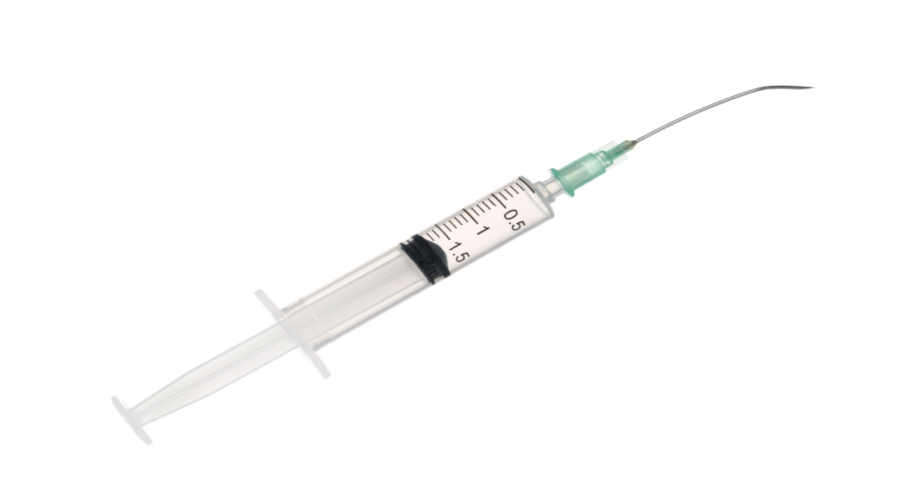In a sea of balance sheets and cash flow statements, a budget may just seem like one more spreadsheet to track. But Terry Bishop, managing partner of Core Financial Outsourcing, a national bookkeeping, accounting, tax, and consulting firm, sees a thoughtful budget as an indispensable tool for growth.
“A business is not going to grow by simply opening and closing the doors every day,” he said. “This type of planning allows business owners to determine what they want their business to be and allows them to dream in a structured way.”
You may think that if you have consistent cash flow, creating a budget is overkill. But a well-structured budget can help you achieve your business goals. “I consider creating a budget to be Best Practice 101 for running a business,” said Bishop. “Huge multi-billion-dollar companies have entire teams of people responsible for budgeting. If businesses of that size are using a budget to monitor performance, learn about their business, and to grow, don’t you think that you should too?”
To help pharmacy owners and managers develop a successful business budget, Bishop breaks down the top budgeting practices for any small business.
1. Predict revenue and expenses
At its core, a budget is simply a prediction of your revenue and expenses over a set period—usually a year. “Start with as many of the expenses you know are fixed,” Bishop said, “then move on to the expenses that are variable based on what it’s going to take to support sales and revenue targets.”
Past financial records are a good place to start, but Bishop points out that your expenses are going to vary based on your goals. If you’re planning to open a new location in the coming year, you will have to account for a lot of new expenses that weren’t on the books last year.
To figure out what kind of revenue growth is reasonable, look outside your business and examine the industry as a whole. If your research says the market for independent pharmacies in your region is expected to grow by 2 percent in the next year, but you’ve budgeted for sales growth of around 7 percent, that’s a sign that your budget might be out of touch. “My challenge would be to ask, ‘What is it about your business that you think you’re going to outperform your peers by as much as two to three times?’”
There may be a realistic justification for such a prediction, but you need to be thorough to justify that growth. Consider all the costs attached to that revenue, like increased cost of goods or additional personnel, and make sure they are accounted for in your budget.
Remember that a budget isn’t a strict spending map or a crystal ball. “It’s not going to be perfect,” Bishop said. “It’s intended to help business owners come up with their best estimate using their professional judgment about their business and how they think the future year or future quarter is going to go.”
2. Account for improvements
Consider what potential improvements you want to make to your pharmacy. If you experienced a lot of employee turnover last year, what will you do to make working at your pharmacy more appealing to attract great employees and keep the ones you have?
Look at your product assortment and tweak what your pharmacy offers for the coming budget period. “Pay attention to what is actually moving through the store,” Bishop said. “What is actually turning over in the inventory, and what other trends or products do people really want?” Reflecting on what works for you and what collects dust on the shelves makes your budget predictions more accurate and your pharmacy more efficient overall.
3. Don’t copy and paste
A common mistake is basing the budget off the previous year’s performance without thinking critically about why. For example, a business might have grown 2 percent this year, so they’ll budget 2 percent revenue growth next year. “My feedback is that you were doing 2 percent growth without any real planning, so why don’t you go through and determine whether 2 percent is actually the right number,” Bishop said. With the right planning, you could potentially grow faster.
That’s why Bishop recommends businesses do zero-based budgeting where they justify every single line on the budget. “It’s useful because it really makes you think about your business,” he said. It’s more work, but it helps you spot opportunities to grow and opportunities to save that you might have otherwise missed.
Essential Sources of Budget Information
Internal Information
Use your profit and loss statement, balance sheet, and cash flow statement to help you make future budget predictions. “Without reliable, accurate historical information, it’s going to be difficult to forecast for the future,” said Bishop.
External Information
“Get outside of your own business to understand what’s going on in your market,” Bishop said. Use the public library to find out the business trends in your area and talk to other pharmacists in your network, pharmacy association, or buying group to learn their successes and struggles.
Expert Information
Lastly, pharmacy owners should seek the counsel of experts who have experience in budgeting and planning. “You may have to pay for that information, but that’s a cost that allows you to solve a problem,” Bishop said. Look for professionals who will work with small business owners on a fractional or scaling basis.
4. Set realistic targets
A good budget will challenge you, but the targets should still be achievable. “If we set our targets too low and constantly overachieve the budget, we are not going to see the value in it. We’re not growing and we’re not reaching for something,” Bishop said. “On the other side, if we’ve been overly aggressive and the targets are way out of reach, then as human beings, we start to feel frustrated and we quit.”
5. Use the budget to grow
A budget isn’t just a spreadsheet—it’s an opportunity to learn. “The whole goal is to learn why you are or aren’t successful in your business,” Bishop said. “Your budget helps you see that.
“If a business is on target or they’ve exceeded their sales target, what we typically say is, ‘Great! Congratulations! But you’re not done.’ They need to evaluate what they’re doing that is contributing to that success.” That involves analyzing sales data to find out which products and services are most successful and figuring out how to use that information to keep improving.
Evaluating Your Budget
To get the most from your budget, don’t just set it and forget it. Once a month or once a quarter, look at your budgeted expenses and revenue, then compare them to your actual expenses and revenue. If your budget is working the way it’s supposed to, you should see positive effects—increased profit margins, net profit, or retained earnings. To make this monitoring easier, Bishop recommends investing in accounting equipment that makes it easy to compare your actual expenses and revenue to your budget.
What should you do if your budget and actual don’t match? Some owners might re-do their budget, but Bishop says this isn’t always a good idea. Before you throw out the budget you’ve built, document your initial forecasting assumptions.
“If we said we were going to forecast sales growth of 5 percent, how are we justifying that? What is our reasoning?” Bishop said. “We need to document those assumptions because three months or six months from now when we see we’re at 3 percent growth, we need to remind ourselves why we thought we were going to be at 5 percent.”
And if your assumptions aren’t valid anymore, determine why. “Last year, everyone’s assumption about 2020 went out the window by March 15,” Bishop pointed out. In that case, he advised clients not to revise their budgets because in such an unpredictable environment it wasn’t possible to make new sets of assumptions with any accuracy.
In other cases, when you can pinpoint exactly why you aren’t meeting a target, it makes sense to reformulate your budget for the rest of the year based on your performance from the first few months of the year. Bishop recommends only doing this if your initial forecast is off by a significant amount. Most businesses won’t meet their exact targets, and that’s okay. “Just because we miss or exceed the budget does not trigger a reassessment,” he said. “What triggers it would be some type of significant event or change with the company, good or bad.”
Even though you’re dealing with hard numbers, budget work is nuanced, and most business owners will benefit from a professional opinion. “Owners should not be doing this in a vacuum,” Bishop said. “They should be engaging other people who know more about these things, whether it’s an in-house accountant or someone who’s on the outside. They can draw on a different set of experiences to help improve the business.”
From the Magazine
This article was published in our quarterly print magazine, which covers relevant topics in greater depth featuring leading experts in the industry. Subscribe to receive the quarterly print issue in your mailbox. All registered independent pharmacies in the U.S. are eligible to receive a free subscription.
More articles from the June 2021 issue:
- Are independent pharmacies missing out on the fastest-growing segment of the pharmacy market?
- Why this pharmacy network only buys from one secondary wholesaler
- These are the front-end shoppers every pharmacy should know
- Five overlooked human resource issues for pharmacies (from an employment law attorney)
- How to increase OTC sales in an age of drive-thru and delivery
- Why pharmacies must offer mobile payment options
- How to make the most of your pharmacy technicians
- Principles for an effective pharmacy budget
An Independently Owned Organization Serving Independent Pharmacies
PBA Health is dedicated to helping independent pharmacies reach their full potential on the buy side of their business. The member-owned company serves independent pharmacies with group purchasing services, expert contract negotiations, proprietary purchasing tools, distribution services, and more.
An HDA member, PBA Health operates its own NABP-accredited (formerly VAWD) warehouse with more than 6,000 SKUs, including brands, generics, narcotics CII-CV, cold-storage products, and over-the-counter (OTC) products.
Want more pharmacy business tips and advice? Sign up for our e-newsletter.












